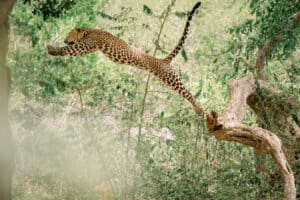Squirrel monkeys live in the forests and tropical jungles of Central and South America, including Peru, Ecuador, Bolivia, Costa Rico, and Panama.

Squirrel monkey facts are plentiful, one being that they are among the cutest monkeys out there. These monkeys are not only cute but are also incredibly intelligent and agile. The five squirrel monkey species inhabit regions across Central and South America. Still, there are many more fun squirrel monkey facts to discover.
1. Squirrel Monkeys Are New World Monkeys
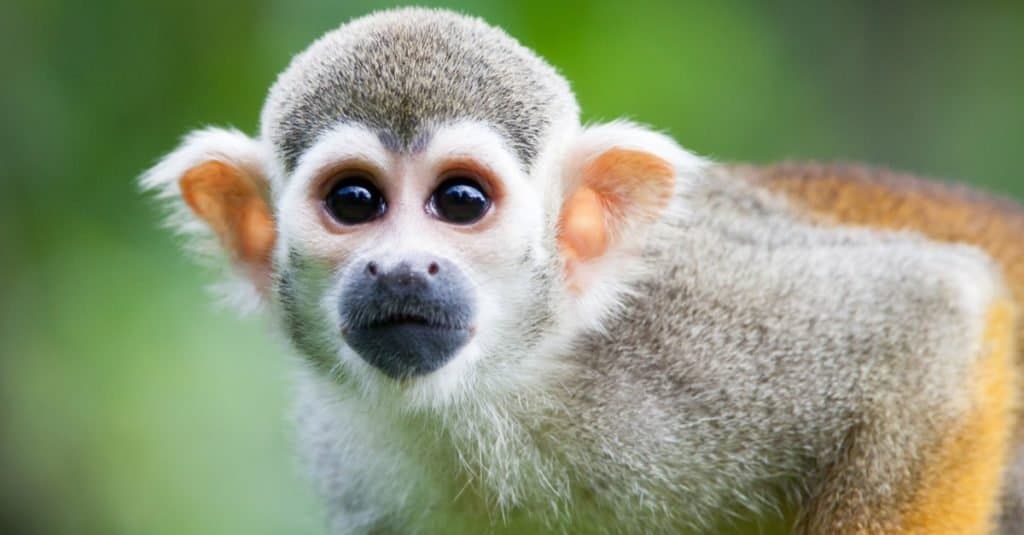
Squirrel monkeys are small and have tails that are longer than their bodies.
©l i g h t p o e t/Shutterstock.com
New World monkeys, like the squirrel monkey, live in the forests and tropical jungles of Central and South America. Squirrel monkeys are small and have tails that are longer than their bodies. Although their tail is long, it is not prehensile, which means that it cannot grip onto things. The purpose of their tail is to help them keep balance while they climb and jump in the canopy. It’s a fun squirrel monkey fact that there are five species, which are:
- Common squirrel monkey
- Black-capped squirrel monkey
- Central American squirrel monkey
- Golden-backed squirrel monkey
- Black-headed squirrel monkey
These different species share certain resemblances, but there are variations in their fur and where they live.
2. Squirrel Monkeys’ Name Comes from Their Speed and Agility
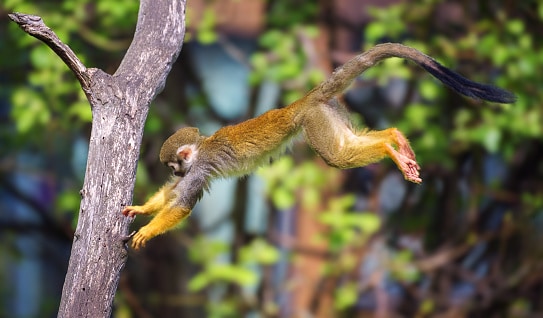
The squirrel monkey is a quick, agile creature whose name alludes to the same traits found in a squirrel.
©miroslav_1/iStock via Getty Images
Squirrels are agile and fast little mammals, and the squirrel monkey moves similarly. Because they share so many characteristics, this is how they got their name. But this is not the only name this monkey has. In Germany, squirrel monkeys are called ‘Totenkopfäffchen,’ meaning skull monkeys. This name is due to the fact that their face resembles a skull. Their eyes are black, with a gray nose and mouth, all surrounded by white fur.
3. It’s Difficult Telling the Male and Female Squirrel Monkeys Apart
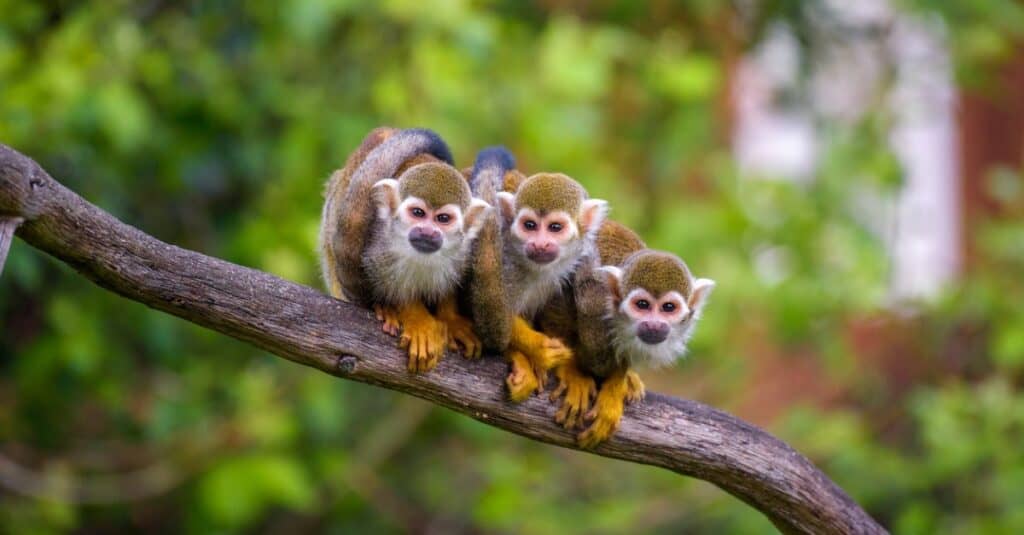
It can be quite challenging to tell a male and female squirrel monkey apart.
©iStock.com/miroslav_1
Male and female squirrel monkeys are almost identical in appearance. The main difference, besides genitalia, is that males are a bit bigger and heavier than females. These monkeys have short, olive, or gray fur with bright yellow limbs. Squirrel monkeys have white faces, a tuft of longer, darker hair on their foreheads, and black or dark brown muzzles. Their tails end in dark, bushy tips. These monkeys have dexterous fingers that help them survive. Their hands evolved to climb and live in trees, open fruits, and grip prey.
4. Squirrel Monkeys Live in the Forests of Central and South America
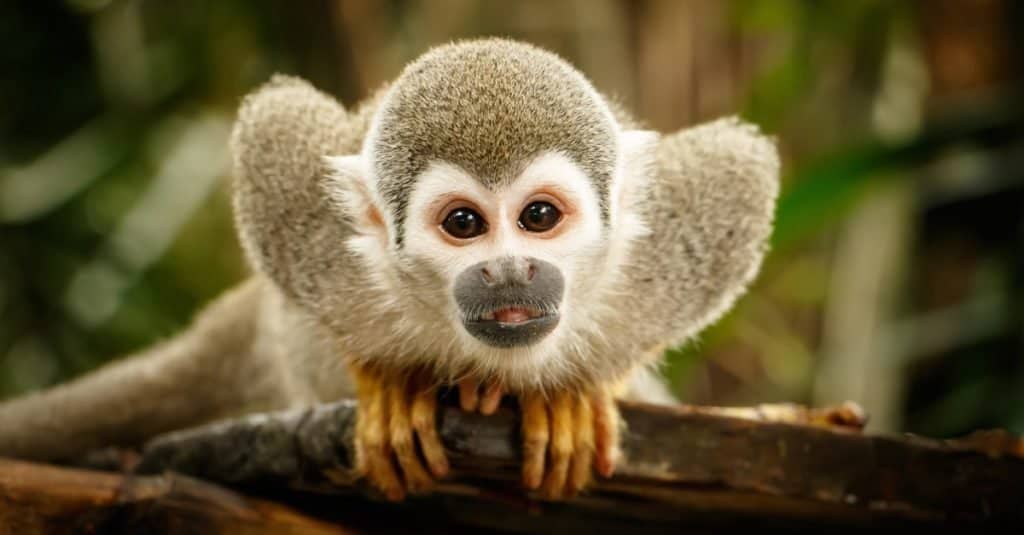
Squirrel monkeys are the most abundant primates in riverside forests in the Guianas and the Amazon River basin.
©Ludmila Ruzickova/Shutterstock.com
There are five species of squirrel monkeys, and they are all found in Central and South America. These monkeys love living in dense, tropical forests nearby sources of water. They are active during the day and stay in the middle level of the forest canopy. They do this to avoid birds of prey closer to the top of the trees and other predators closer to the ground. Nevertheless, squirrel monkeys live not only in forest areas but also in urban and agricultural areas.
5. Squirrel Monkeys Live in Troops with up to 500 Members
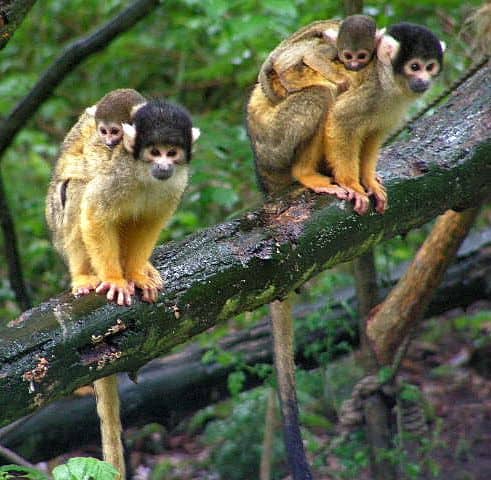
Squirrels monkeys live in troops that average 40-50 members.
©Jensbn~commonswiki assumed (based on copyright claims) / CC BY-SA 3.0 – License
These monkeys are social mammals and live in large troops. Most troops consist of 40 to 50 members, but some can reach up to 500 individuals. Another squirrel monkey fact is that the troops comprise subgroups of adult males, pregnant females, females with their young, and groups of young squirrel monkeys. These subgroups will converge at night to sleep and separate during the day to feed. These intelligent animals are opportunistic, and some subgroups follow others at a distance to pick up food they drop as they travel.
6. Male Squirrel Monkeys Become Aggressive During the Mating Season
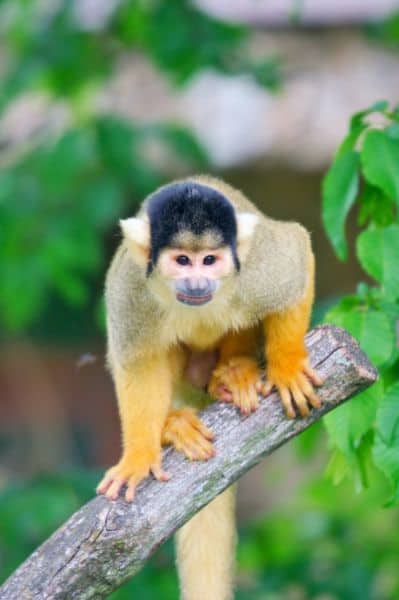
During mating season, the male squirrel monkey’s shoulders broaden and he becomes aggressive.
©MatthiasKabel / CC BY-SA 3.0, Wikimedia Commons – License
Once the mating season starts, male squirrel monkeys’ shoulders broaden, and they become aggressive. The males will fight other males to earn mating rights. The more fights a male wins, the more attractive he will be to females. Female squirrel monkeys are pregnant for five months. The birthing period is usually between June and August, the heaviest annual rainfall period.
Once the mother has given birth, she will chase the father away, and he will return to his all-male subgroup. Baby squirrel monkeys depend entirely on their mothers until they reach ten months. Male squirrel monkeys will leave their mothers to join a young all-male subgroup, but female squirrel monkeys will stay close to their mothers and likely stay in their subgroup.
7. Squirrel Monkeys Are Omnivorous
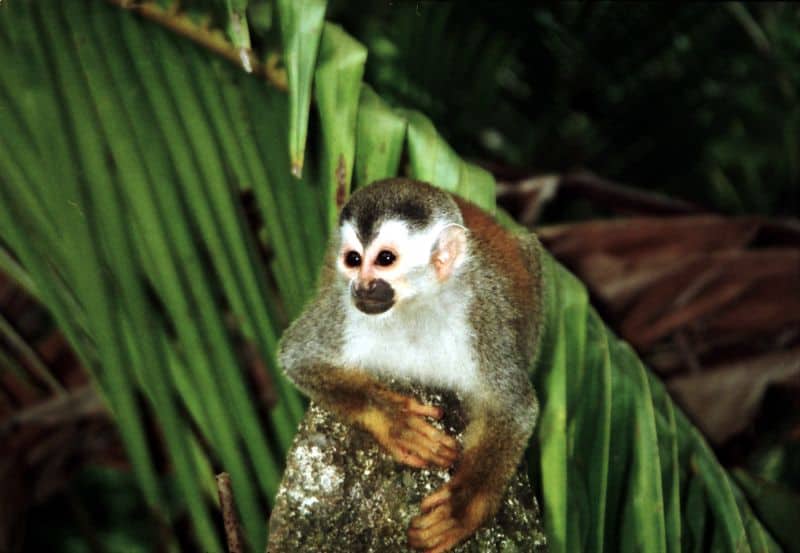
Squirrel monkeys are omnivorous, so they eat plants and small animals.
©Lindadevolder, CC BY-SA 3.0, via Wikimedia Commons – License
Omnivorous animals have diets that consist of animal and plant matter. Squirrel monkeys are opportunistic feeders and will eat a wide range of foods, depending on what is available in their surroundings. Their diet primarily comprises fruits and insects, but these monkeys eat flowers, buds, eggs, nuts, lizards, and other small vertebrates. Squirrel monkeys also have hands designed to hold onto prey and crack open hard-to-get foods like nuts and certain fruits. Sadly, these monkeys have been quite a nuisance to some farmers because they raid agricultural plantations for food. However, these monkeys only do this because their habitat and food sources have shrunk because of deforestation.
8. Squirrel Monkeys Are One of the Smartest Primates
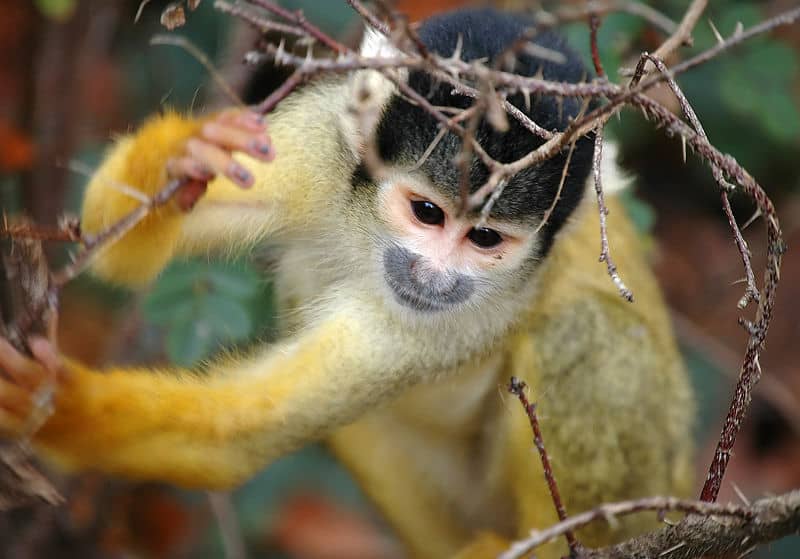
Of all the monkey species, squirrel monkeys have the most significant brain-to-body mass ratio.
©Marieke Kuijpers from ‘s-Hertogenbosch, Netherlands, CC BY 2.0, via Wikimedia Commons – License
Squirrel monkeys have the most significant brain-to-body mass ratio of all the monkey species. Because of this, squirrel monkeys are understood as being incredibly intelligent. These monkeys also have excellent eyesight and color vision. They use this visual acuity to spot fruits efficiently among the dense vegetation.
9. Squirrel Monkeys Communicate Effectively
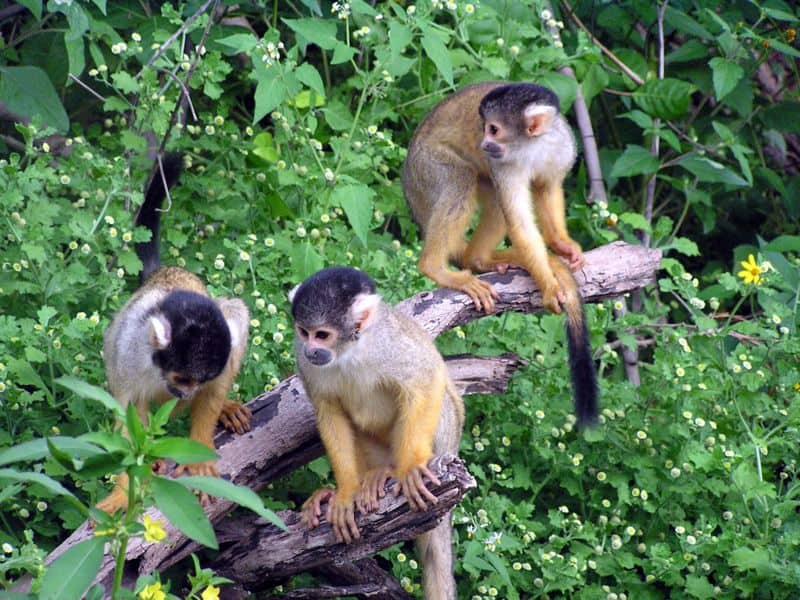
Squirrel monkeys communicate using different noises between subgroups.
©Lindadevolder assumed (based on copyright claims), CC BY-SA 3.0, via Wikimedia Commons – License
These monkeys communicate using different noises between subgroups. For example, squirrel monkeys will communicate while feeding to let their troop members know where they are by making a ‘chuck-chuck’ sound. Another way that they communicate with their troop members is by leaving a scent trail. The squirrel monkey rubs urine on their hands and feet, spreading it across the vegetation as they move through the trees.
10. Squirrel Monkey Habitats Are Threatened

Factors like logging and deforestation in the Central American rainforest have threatened the squirrel monkey species.
©Wirestock Creators/Shutterstock.com
Because of logging and deforestation in the Central American rainforest, squirrel monkeys and many other species are losing parts of their habitat. Deforestation is taking place because of agriculture and the developing tourism industry. These monkeys also face other threats. Some threats include insecticides in agricultural areas, the illegal pet trade, and death due to electrocution from electric power lines.
The photo featured at the top of this post is © Ludmila Ruzickova/Shutterstock.com
Sources
- Britannica, Available here: https://www.britannica.com/animal/squirrel-monkey
- Animal Fun Facts, Available here: https://www.animalfunfacts.net/primates/72-squirrel-monkey.html
- Wilderness Classroom, Available here: https://wildernessclassroom.org/wilderness-library/squirrel-monkey/
- Monkey Sanctuary, Available here: https://www.monkeysanctuary.co.za/squirrel-monkeys
Thank you for reading! Have some feedback for us? Contact the AZ Animals editorial team.




